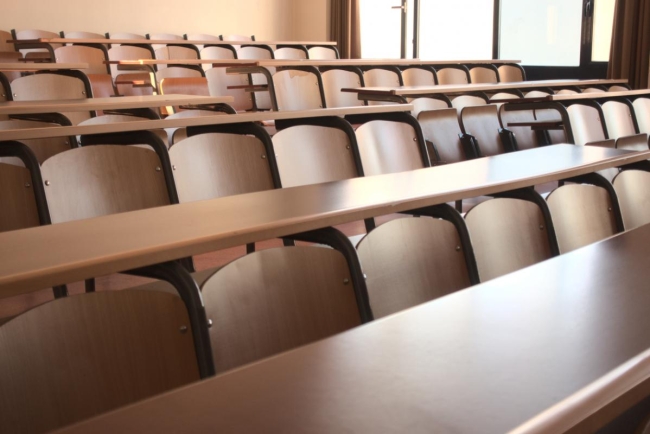You have /5 articles left.
Sign up for a free account or log in.

istock.com/Canberk Sezer
The biggest challenges facing higher education have not changed as a result of the coronavirus pandemic, a new survey of public college leaders says. Instead, the challenges have been exacerbated and have taken on a new urgency.
College leaders surveyed included presidents, provosts, student affairs professionals and others. They identified government funding, student mental health, diversity and inclusion, and affordability as the biggest challenges facing public higher education, in that order.
The survey, conducted by the Association of Public and Land-grant Universities in partnership with Blue Moon Consulting Group and the marketing firm SimpsonScarborough, queried 558 APLU members in fall 2019. Follow-up interviews with 28 presidents conducted in late 2019 and early 2020 revisited some of the findings in light of the pandemic and other events.
"Everything that the schools are facing in COVID were the exact same set of things that they identified pre-COVID, except they’re on steroids," said Simon Barker, managing partner at Blue Moon Consulting Group.
More than three-quarters of respondents reported government funding is a “big challenge” for their institutions. A primary driver for this is the decline in the belief that public education is a public good, according to a report on survey findings, which also said that the reputation of public higher education has been damaged by the Varsity Blues admissions scandal and various sexual assault and athletics scandals.
Sophia Laderman, a senior policy analyst at the State Higher Education Executive Officers association, has observed similar trends in her research.
"When state governments are faced with reduced tax revenues and increased needs in health care and other essential areas, it’s difficult to allocate funding to higher education over another budget area even if you understand that higher education is essential to future economic development and contributes greatly to our democracy, etc.," Laderman wrote in an email. "Federal stimulus funds can help states maintain funding to higher education during times like these and would be hugely beneficial for states. However, if states cut funding to higher education and replace it with federal stimulus funds, it’s incredibly important that the state funds are restored once the stimulus runs out."
In addition to concerns about federal and state funding, “the delicate financial balancing act most schools undertake each semester [has] been laid bare by COVID-19-driven layoffs, furloughs, program cuts, and the expected significant reduction in state allocations to higher education as they scramble to meet public health financial challenges,” the report said.
More than two-thirds of respondents, 68 percent, identified student mental health as a big challenge, made worse by the added stress of the pandemic and shifts in learning methods.
“I don’t have any doubt that with the turmoil in society, with diversity issues and the pandemic, which is scary for some people, that all of that combined is a storm that impacts mental health,” said Peter McPherson, president of APLU.
Institutions have been somewhat stunted in their efforts to address student mental health, partly because funding for mental health services is drying up as colleges lose auxiliary revenue, Barker said. Many schools refunded room and board and other fees to students last spring, which took away from some of the student services funding that otherwise would have supported student mental health.
Diversity and inclusion of students, faculty and staff was the third-biggest challenge that higher education leaders identified, with 63 percent calling it a big challenge.
“Interestingly, 7 percent rated the issue as not being a challenge because diversity and inclusion had been successfully addressed,” the report read. It did not expand on why some college leaders responded this way, and Barker said the follow-up interviews did not touch on diversity and inclusion issues.
The report forecasts a busy semester of student activism this fall.
“While the environment was already primed for a politically active fall semester prior to Covid-19, inherent, structural racism dramatically revealed by both the pandemic and now George Floyd’s death, can be expected to bring campus activism to new heights,” the report read.
Barker highlighted as the most interesting part of the survey an apparent disconnect between leaders’ confidence in their ability to meet their institutions' own strategic goals and their concern about challenges facing higher education.
“If you just consider the context of these surveys, we’ve just asked them about financial issues, all of these sort of negative challenges. I think you could argue that that context would make people think more seriously about the answer to the question, ‘Are you able to meet your strategic goals?’” Barker said. “Only 8 percent said they are not able to. I thought that was a remarkable statistic.”
The report compared the disparity to the overconfident sign-off of the radio show A Prairie Home Companion, when the host says “Well, that’s the news from Lake Wobegon, where all the women are strong, all the men are good-looking, and all the children are above average.”
Barker believes leaders might not be seeing problems on their own campus as clearly as they should be.
“Everyone recognizes big problems in higher ed, but it doesn’t somehow reflect back on their individual institution,” he said.
McPherson thinks that if the presidents were surveyed again today, that metric would look very different.
“The polling was done pre- most of the current problems. The funding is much tougher than it was when that polling was done,” he said. “I think they would be less optimistic.”








